Passionflower is a climbing liana that produces breathtakingly beautiful, exotic flowers. But it is also a plant known for being invasive. During its very rapid growth it extends its stems in all directions. If not trained and pruned correctly, passionflower can sometimes become excessively large and hard to manage.
Pruning and training passionflower are two very simple tasks, thanks to which you will enjoy a thriving, healthy plant covered in many splendid flowers.
Pruning passionflower
First of all, know that it is not necessary to prune a passionflower before the fourth year after planting.
After that time, passionflowers grown in ground are preferably pruned in March, at end of winter. Note that the most vigorous Passiflora plants also tolerate a second pruning after flowering, that is in autumn. In case of a very invasive plant, a prune during flowering, in mid-summer, can be considered, but only if absolutely necessary.
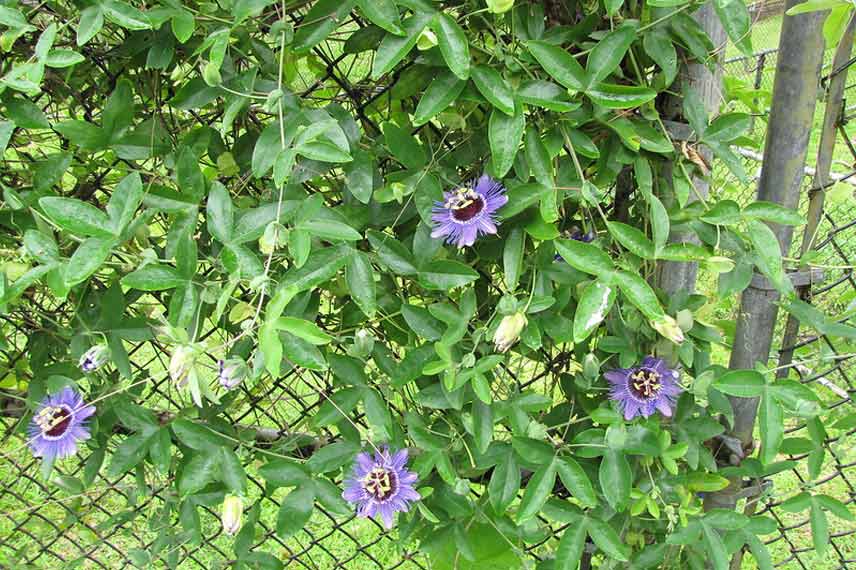
Passiflora caerulea ‘Purple Haze’, © Forest and Kim Starr - Flickr
For their part, potted plants are pruned in autumn, just before being put into shelter for winter. For the hardiest varieties of potted passionflowers that spend winter outdoors, wrapped in winter protection, pruning takes place only in spring, as with specimens in ground. This avoids weakening them just as they are about to face cold.
Note: with its rapid growth, passionflower always flowers on shoots of the year, so late-winter pruning does not affect that year’s flower production.
Equipment needed
- Clean, disinfected pruning shear
- Pair of gloves
Clean the passionflower
Before getting stuck into pruning, start by cleaning passionflower by removing dead stems. These are easily recognised by their yellow, even black, colour. Any damaged or poorly placed stems should also be cut back to ground level.
Solenne’s tip: for passionflowers planted outdoors, the top can sometimes freeze completely while roots survive the cold. In that case, cut back any aerial parts scorched by frost, and wait to see if plant reshoots from stump during spring.
Reduce the foliage
To encourage flowering, focus on secondary stems, unbranched, that appeared during the previous year. Use pruning shear to cut them 20 cm from the base.
You can also remove the weakest stems to open up the plant, without however ever cutting main structural stems, i.e. the largest ones (approximately the thickness of a finger).
Pruning a potted passionflower
Pruning a potted passionflower consists of reducing stem length by half, and completely removing one third of stems to open up its habit.
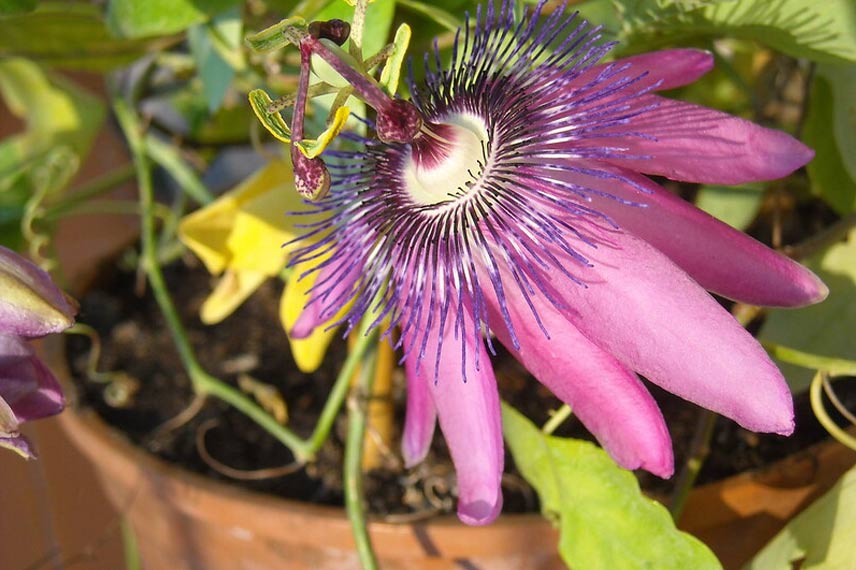
Passiflora 'Purple Passion' en pot, © Claudy-o Cdy-o - Flickr
Re-cut passionflower
Every four years, re-cut passionflower to regenerate its stump and renew its main structural stems.
Re-cutting a passionflower consists of cutting back one in three main stems to 50 cm from ground.
Training passionflower
Passionflower is a vigorous climbing plant, capable of easily colonising its space, and which must therefore be channelled and directed using a suitable support. To do this, train passionflower from planting onwards. The operation is not difficult, thanks to the plant’s tendrils, which can naturally wrap around many supports, provided these are sufficiently sturdy.
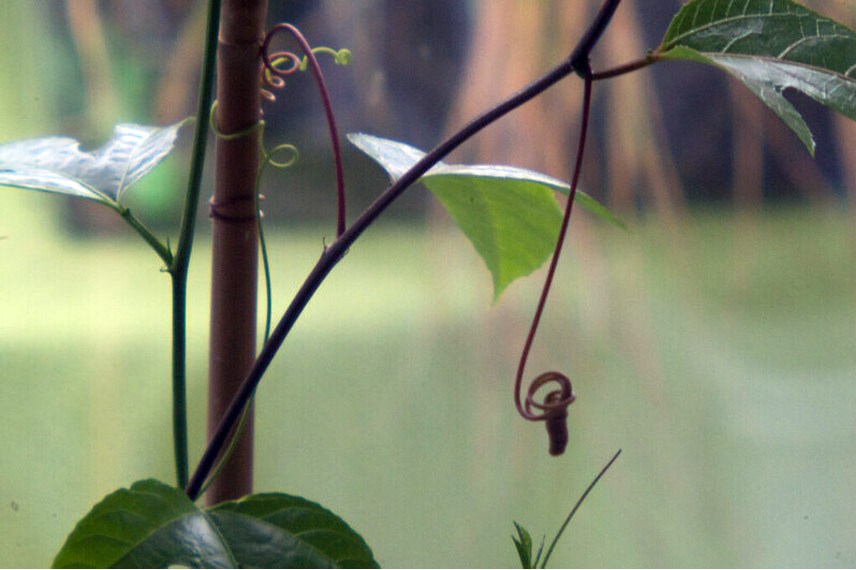
Vrilles de la passiflore, © Bernd Hutschenreuther – Flickr
It is therefore possible to train passionflower on wooden trellis, a pergola, or wire mesh. Avoid simple metal wires on which passionflower tendrils have more difficulty attaching. Crossed supports are therefore more suitable.
Note: always choose a large support to accommodate rapid growth of passionflower which can easily spread over more than 8 m2.
Equipment needed
- Sturdy pergola, trellis or wire mesh
- Fastenings
Train passionflower
Simply guide branches of young specimens onto chosen passionflower trellis. Train stems in a fan shape to form future main structural stems.
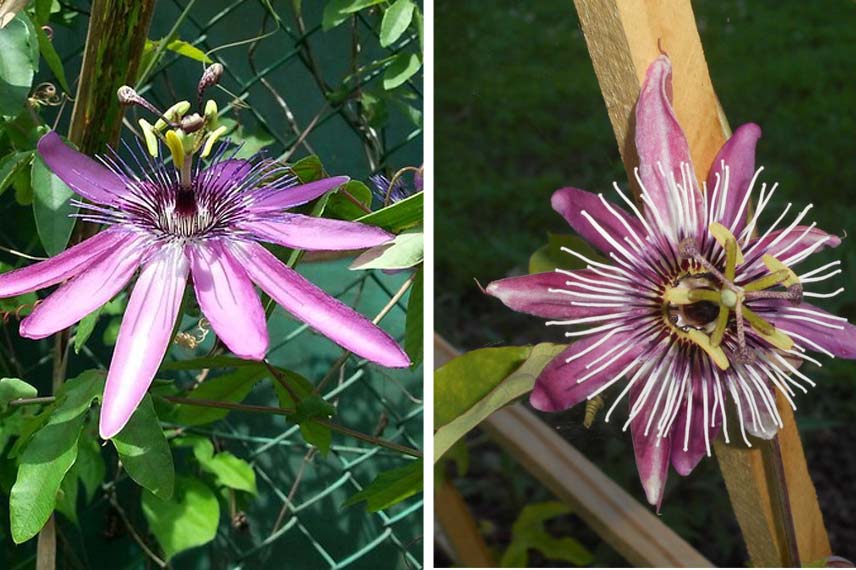
Passiflora Violacea, © Jnzl's Photos|Passiflore Victoria, © Tony Alter - Flickr
Why pruning and training passionflower are essential
In the wild, passionflowers are climbing lianas that do not need pruning to flower or fruit. However, these two operations are essential for garden or container culture.
Indeed, passionflower is a very vigorous plant, known for its ability to rapidly colonise its environment to the point of becoming invasive. In their natural habitat some species in particular can even reach 40 m in height. Although their development is much less dramatic in our climates, passionflowers remain expansive. Pruning and training therefore serve to moderate their rapid development. Even when grown in a pot, vegetative mass must be controlled so aerial parts match pot volume and therefore root system.
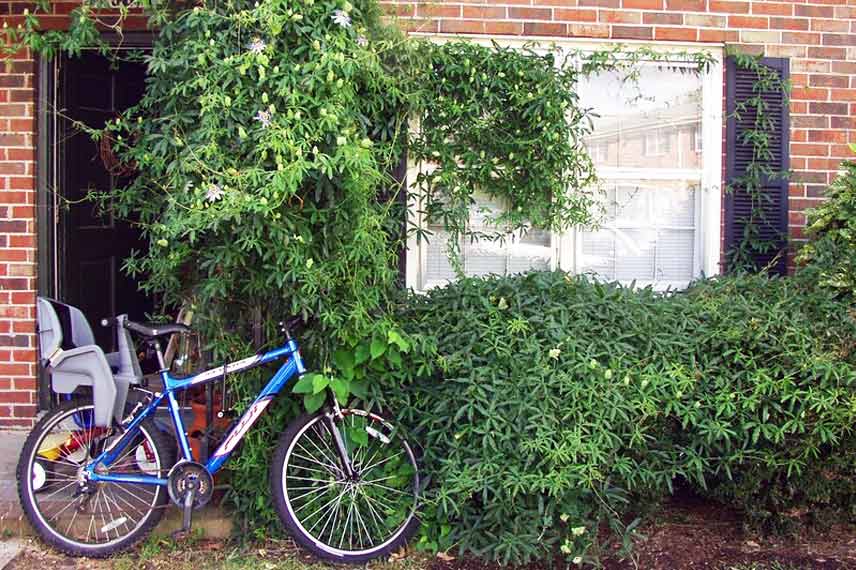
Passiflore, © Maggie McCain - Flickr
Pruning passionflower also has the major advantage of helping it produce flowers rather than foliage. Indeed, the more passionflower draws on reserves to develop leaves and extend stems, the fewer flowers it produces. By pruning old stems, you therefore encourage production of new floriferous shoots.































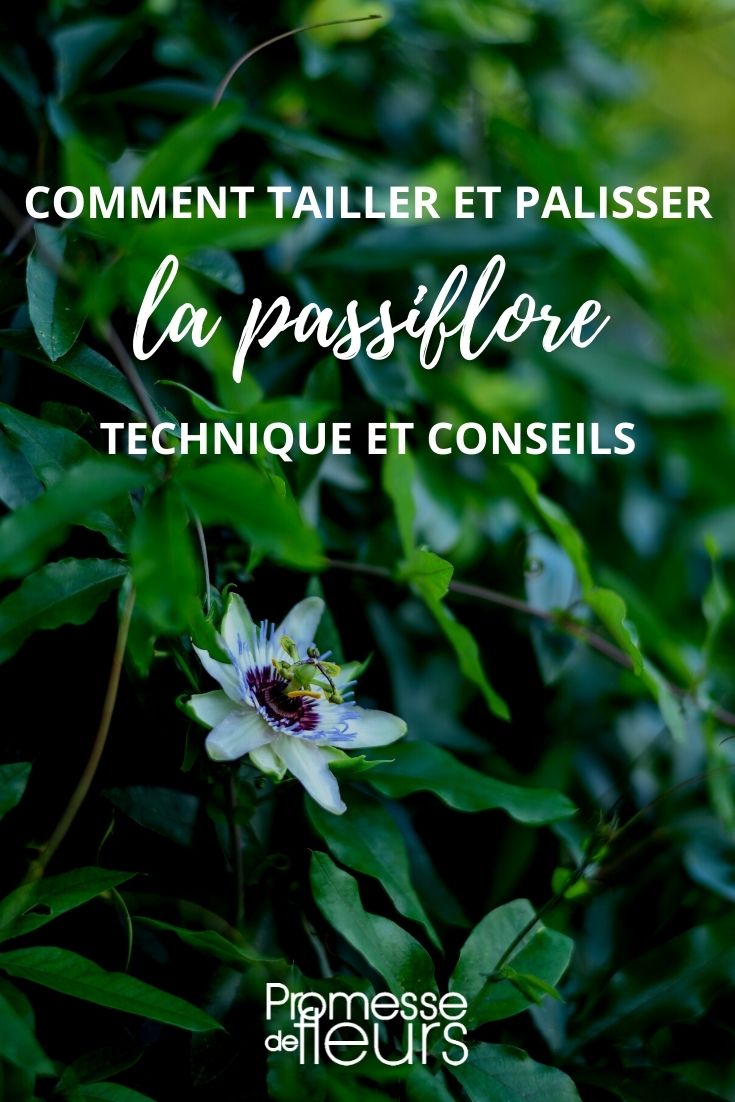
Comments